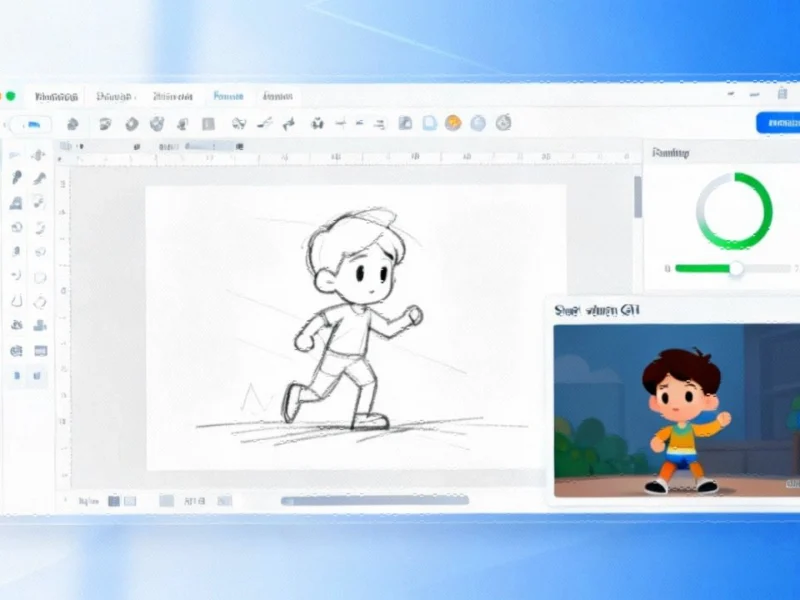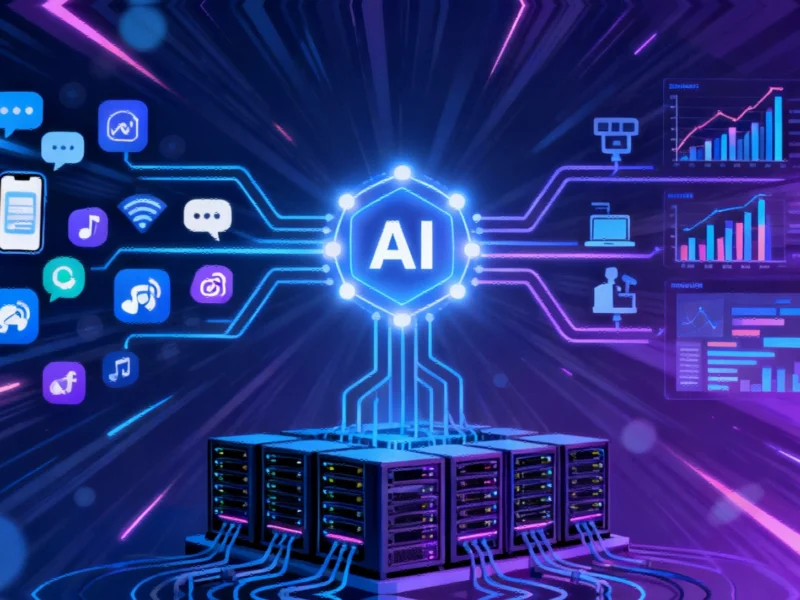Windows 11’s Paint Transforms from Basic Tool to AI Powerhouse
Microsoft is fundamentally reimagining one of its most iconic applications through artificial intelligence integration. The Windows 11 Paint app, once considered a simple drawing tool, now features groundbreaking AI capabilities that position it as a legitimate creative platform. This strategic enhancement reflects Microsoft’s broader commitment to embedding AI throughout its ecosystem, transforming how users interact with even the most established applications.
The newly introduced features—Animate and Generative Edit—represent Microsoft’s most ambitious Paint upgrade in decades. Available through the Windows AI Labs program, these tools demonstrate how the company is testing advanced AI capabilities with select users before potential widespread deployment. What makes this approach particularly noteworthy is that participation doesn’t require Windows Insider status, making experimental features more accessible than ever before.
Bringing Images to Life with AI Animation
The Animate feature represents a significant leap forward in automated content creation. With a single click, users can transform static images into dynamic animations without any technical expertise. Located under the Copilot menu, this tool analyzes the composition of any sketch or photograph and applies motion effects automatically.
According to initial testing, the generation process typically takes 40-60 seconds, after which users can save the result locally or export as a GIF. While the technology is still evolving and results can be inconsistent, the capability itself marks a dramatic shift in what users can expect from built-in creative tools. This development aligns with broader industry developments toward democratizing advanced creative capabilities.
Transformative Editing Through Natural Language
Generative Edit introduces Photoshop-level capabilities to the Paint environment through text-based commands. Users can remove unwanted elements, alter backgrounds, or completely transform images using simple natural language instructions. This functionality mirrors advanced features found in premium editing software but makes them accessible within a free, built-in application.
Microsoft appears to be using a proprietary AI model rather than relying on third-party systems like DALL·E or Imagen. This strategic decision reflects the company’s growing investment in developing its own AI infrastructure. As with many related innovations in the AI space, the technology shows steady improvement despite occasional variability in output quality.
The Strategic Importance of Windows AI Labs
Windows AI Labs represents Microsoft’s methodical approach to AI integration. By testing features with a controlled user group, the company can gather valuable feedback while managing expectations about feature stability. The program’s selective nature ensures that Microsoft can refine tools based on real-world usage before considering broader release.
This cautious rollout strategy makes particular sense given the experimental nature of the technology. Microsoft explicitly states that there’s no guarantee these features will reach all users, positioning the program as an opportunity for collaborative development rather than a promised product roadmap. This approach to market trends in technology deployment demonstrates thoughtful product management.
Broader Implications for Creative Software
The enhancement of Paint with advanced AI capabilities signals a significant shift in the creative software landscape. When built-in operating system applications can perform tasks that previously required specialized software, the entire ecosystem must adapt. This development potentially disrupts the market for basic image editing tools while raising user expectations for what should be available without additional downloads or subscriptions.
Microsoft’s strategy reflects a growing recognition that AI integration must happen at multiple levels of the user experience. From sophisticated creative tools to fundamental recent technology infrastructure, artificial intelligence is becoming embedded throughout the digital landscape. The company’s approach to Paint suggests we can expect similar transformations across other built-in applications.
Security and Data Considerations
As with any AI-powered feature that processes user content, questions naturally arise about data handling and privacy. Microsoft hasn’t detailed the specific data processing protocols for these Paint features, but the company’s general approach to AI privacy suggests images are processed securely. However, users should remain aware of the broader industry developments regarding data security as AI tools become more pervasive.
The controlled rollout through Windows AI Labs provides an additional layer of protection by limiting initial exposure while the technology matures. This measured approach to deployment represents best practices for introducing potentially sensitive features.
The Future of Built-in Applications
Paint’s transformation from a basic drawing utility to an AI-enhanced creative platform illustrates Microsoft’s vision for the future of built-in applications. Rather than maintaining simple tools as legacy features, the company is reimagining them as showcases for cutting-edge technology. This strategy potentially increases user engagement with native applications while demonstrating the practical benefits of AI integration.
As these market trends continue to evolve, we can expect similar transformations across Microsoft’s application portfolio. The success of these Paint features could determine how aggressively the company pursues AI integration in other familiar tools, potentially reshaping user experiences throughout the Windows ecosystem.
What’s particularly notable about Microsoft’s approach is the seamless integration of advanced capabilities into familiar interfaces. By enhancing existing applications rather than creating entirely new ones, the company reduces the learning curve while dramatically expanding functionality. This strategy represents a sophisticated understanding of how users adopt new technologies—through evolution rather than revolution.
The ongoing enhancement of Paint underscores a fundamental truth about modern software development: no application is too established to escape reinvention through artificial intelligence. As Microsoft continues to test and refine these features, the creative possibilities for everyday users continue to expand in previously unimaginable directions.
This article aggregates information from publicly available sources. All trademarks and copyrights belong to their respective owners.



